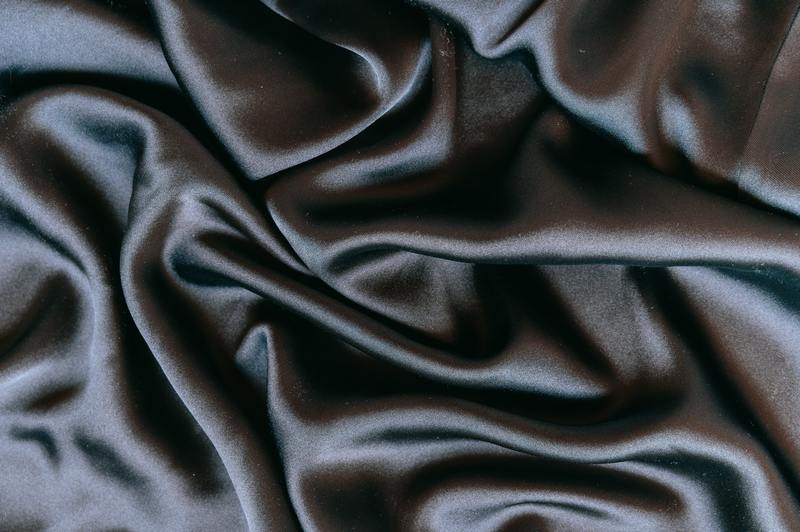Sometimes laundering fabrics are not enough to remove dirt, and over time they accumulate. You will know how to remove mildew from silk in this article.
You may have smelled it before you saw it, but mildew on silk items is always a source of disappointment. Mildew is a mold that thrives in moist, humid environments with little to no air movement or sunshine.

Mildew-discolored silk can work to your benefit because wet-cleaning the item rather than dry-cleaning gives you the best option of eliminating the mildew with nontoxic and mild hydrogen peroxide.
Silk And Mildew
Dry cleaning is recommended for silk. When pretreating and laundering your garments, always follow the instructions on the garment label. You should test color fastness on the inner seam of colored clothes.
If the stain is washable, wash it with detergent, 20 Mule Borax, and bleach if the garment’s manufacturer recommends it. If the discoloration persists, sponge it with hydrogen peroxide and launder it again.
In the sun, dry. Avoid using enzyme-based laundry chemicals to clean silk.
Note: It may irreparably destroy some mildewed materials. Take it to a dry cleaner for stain removal if it’s only dry clean.
Washing Mildew Off Silk
Mold is an issue that can grow on various surfaces, including wood, tiles, and cloth. Mold may damage delicate goods like silk fabric beyond repair if it develops on them.
You cannot use normal mold removal methods on silk because it is fragile. Here are the easy suggested ways to wash mildew off the silk.
Method #1. The 8-step mildew removal
Step #1. Put on a pair of gloves to protect your hands. Take the silk item outside and use a soft brush to remove as much mildew as possible.
Wrap the mildew in a paper towel and then a plastic bag before throwing it away.
Step #2. In the sun, dry the silk item. Sit tight until it is warm to touch before laying it out in a sunny spot indoors.
Step #3. Test its color fastness before applying the complete hydrogen peroxide treatment to your silk clothing. Clip a hidden fabric piece, such as a hem or a shoulder seam.
Step #4. Soak the cloth swatch for one hour in full-strength hydrogen peroxide (no water). Before determining whether to proceed, rinse the swatch, dry it, and compare it to the color of the garment.
Step #5. For every gallon of warm water in your washing machine, add about 10 ounces of hydrogen peroxide. Take note that the temperature of the water should not exceed 100 degrees Fahrenheit.
Step #6. Add 64 ounces of hydrogen peroxide to a full load — that’s four 16-ounce bottles, the most common amount seen in stores. Allow the machine to stir the water and hydrogen peroxide before turning it off.
Step #7. Put the silk clothing in the washing machine for up to three hours to soak.
Step #8. Select your washing machine’s gentlest agitation cycle. Finish the washing machine cycle. Next, the items should drip dry on hangers in a warm environment.
Method #2. The 5-step deep cleaning
Step #1. Place the silk flat on a level surface. Wipe away the surface mold on the silk using a moist towel.
Step #2. Fill a small container halfway with white vinegar and halfway with water. Using a cloth, soak up the extra liquid and wring it off.
The cloth should be somewhat damp but not dripping wet.
Step #3. Using the dampened cloth, blot the silk. Vinegar is an all-natural cleanser and deodorizer that destroys mold and mildew without harsh chemicals.
Step #4. Using cool water, rinse the silk fabric. Place the wet silk on a towel that has been laid out flat. You should roll up the silk and towel.
The dry towel will absorb the water from the silk cloth. Using dry towels, repeat this procedure until the fabric is no longer dripping wet.
Step #5. Allow the silk to air dry after laying it out on a dry cloth. Keep it away from intense sun exposure and extreme heat.
Keeping Silk Clothes Safe
Because silk is prone to wrinkling and creasing, appropriate storage is essential. Avoid folding silk or storing it in a ball for an extended period of time.
To keep silk products dry, store them in a breathable fabric (not plastic) bag. Place in a cold, dry, dark closet to hang or store.
How often should silk clothes be cleaned?
Unless it needs refreshing and stain removal, wash silk after a few wearings. Keep in mind that washing your silk clothes at home can cause color fading if done too frequently.
Dry-washing takes longer to degrade the color of silk garments. Check out this article on how to get mildew stains out of colored clothes to help you along the way.
How to care for silk clothes?
Bleach, whether oxygen or chlorine-based, should never be used on silk. Chlorine bleach dissolves silk fibers, and even diluted chlorine bleach solutions cause irreversible fading, color loss, and weakening of the silk.
When washing silk fabric, never wring or twist it since the delicate silk fibers can break. Drying silk garments in a tumble dryer, even on low heat, is not recommended.
Dry silk clothing flat or well-supported on a drying rack if you don’t have a decent hanger. See this linked article about what kills mildew smell, and it will help you with deodorizing your clothes.
Conclusion
Silk has a sumptuous texture and a lovely sheen. You may have avoided silk clothing or pillows because you felt the fabric was too costly or difficult to maintain.
Make sure to always check the label to see if the fabric is made of washable silk, and never use a powerful stain remover or bleach on silk.
Hopefully, all methods above were helpful on how to remove mildew from silk.
